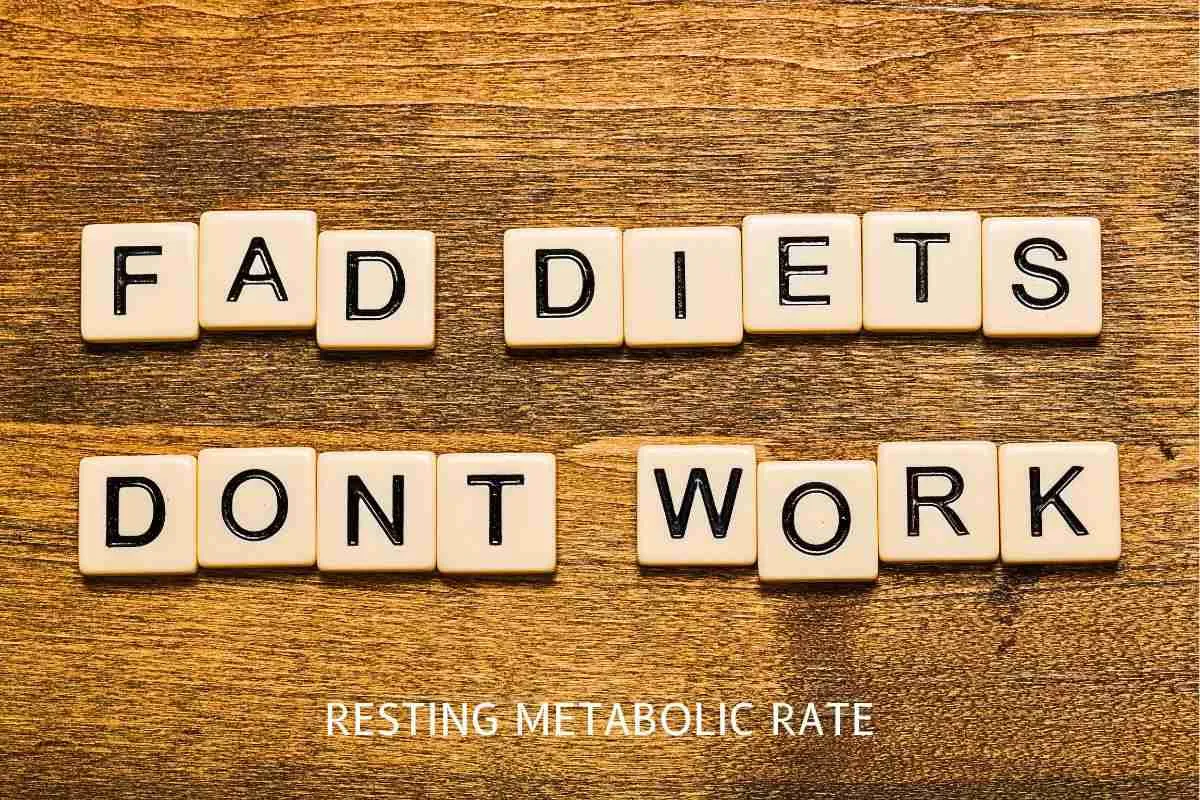Your Senior Journey
Your Senior Journey
The Hidden Benefits of Resting Metabolic Rate: Achieve Great Results in Belly Fat Loss
Welcome to 'The Hidden Benefits of Resting Metabolic Rate: Achieve Great Results in Belly Fat Loss'.
Let's start with a fundamental question: Why should we bother shedding belly fat? It's a valid inquiry, especially in today's era of body positivity. If we're content with our bodies, including belly fat, why strive for a leaner physique?
While embracing self-acceptance is crucial, it's also essential to understand the risks associated with excess belly fat.
Beyond aesthetics, excess belly fat - especially visceral fat - can indicate serious underlying health issues.
It increases the risk of certain cancers, such as breast and colorectal cancer, as well as metabolic disorders like diabetes, high blood pressure, and heart disease. Therefore, while embracing our bodies is essential, maintaining a healthy balance is crucial for overall well-being.
So, while we might be okay with a little extra belly fat, it's essential to realise that it's not just about looks - it's about safeguarding our overall health and well-being.
R M R
Resting Metabolic Rate
You're not alone in the struggle to shed stubborn belly fat - it's among the most challenging hurdles on the weight loss journey.
However, there's a powerful tool at your disposal in this fight: increasing your Resting Metabolic Rate (RMR). RMR: This is the amount of calories your body burns while doing nothing!

Understanding and increasing your RMR is the secret weapon in your fight against belly fat. So, take a moment to settle in (you're entering your RMR zone - no pun intended), and let's delve into burning fat!
THE POWER OF RESTING METABOLIC RATE: THE KEY TO EFFORTLESS BELLY FAT LOSS
When it comes to losing weight, especially targeting belly fat, simply cutting calories and exercising may not be enough.
Your Resting Metabolic Rate (RMR) plays a critical role in how efficiently your body burns calories during rest periods. The higher your RMR, the more calories your body burns while you're doing nothing.
However, several factors can lower your RMR, leading to stubborn belly fat returning. Understanding what RMR is and how to boost it can significantly enhance your body's natural fat-burning capabilities, making it an effective tool in achieving a slimmer waistline.
RMR vs. BMR: Understanding the Differences

RESTING METABOLIC RATE (RMR)
RMR is the energy your body needs to maintain basic functions at rest, such as breathing and circulation, while allowing for minimal activity. It typically accounts for 60-75% of your daily calorie expenditure.

BASAL METABOLIC RATE (BMR)
BMR is the energy required to sustain vital bodily functions while in deep rest, such as during sleep. It's slightly lower than RMR because it excludes the energy used for low-intensity activities.
In summary, while both RMR and BMR measure your body's energy needs at rest, RMR includes a broader range of activities beyond basic bodily functions compared to BMR.
Why RMR is Important
Increasing your resting metabolic rate (RMR) means you burn more calories even while resting.
For instance, simply walking to the kitchen, chatting with a friend, or sitting down for coffee can contribute to calorie burning. A higher RMR indicates you burn more calories at rest, which is beneficial for effective weight loss, especially targeting belly fat.
Remember, your Resting Metabolic Rate (RMR) makes up the lion's share of your daily calorie burn, typically around 60-75%. The rest goes towards activities like exercise and daily movements, plus the energy used to digest food.
So, how do you figure out your RMR and, more importantly, increase it? Keep on reading!

How do Calculate my Resting Metabolic Rate
There are several methods to calculate your RMR. You can manually calculate it using formulas like the Mifflin-St Jeor Equation or the Harris-Benedict Equation. Here are the equations:
Mifflin-St Jeor Equation: For men: (10 × weight in kg) + (6.25 × height in cm) - (5 × age in years) + 5. For women: (10 × weight in kg) + (6.25 × height in cm) - (5 × age in years) - 161.
Harris-Benedict Equation: Click here to calculate your Resting Metabolic Rate (RMR) using the Harris-Benedict Equation.
Moreover, there are weighing scales that provide metrics beyond weight, such as body fat percentage, BMR, and skeletal muscle mass.

Although these scales can offer reasonably accurate estimates, they are not as precise as clinical methods like the DEXA Scan or specific tests for Resting Metabolic Rate (RMR).
These clinical methods typically involve more advanced technology and may provide more accurate measurements.
How Your Body Burns Calories Every Day
Your Total Daily Energy Expenditure (TDEE) encompasses various components:
Resting Metabolic Rate (RMR): This forms the largest part, accounting for 60-75% of TDEE. It's the calories your body burns to sustain basic functions like breathing and organ function.
Thermic Effect of Food (TEF): About 10% of TDEE, is the calories burned during digestion and food processing.
Physical Activity: Constituting 15-30% of TDEE, this includes calories burned through all forms of movement, from exercise to daily activities like walking and cleaning.
Thermic Effect of Exercise (TEE): Extra calories burned during structured exercise.
Non-Exercise Activity Thermogenesis (NEAT): Calories burned from everyday movements like fidgeting and standing, contributing significantly to daily energy expenditure.
The Key to Burning Belly Fat: Understanding Your Resting Metabolic Rate (RMR)
Your RMR is a critical part of daily calorie expenditure, representing 60-75% of the calories you burn each day. It reflects the energy your body requires for essential functions such as breathing, heart rate, and brain activity during rest.
Baseline Calorie Burn
Your Resting Metabolic Rate (RMR) is the foundation for how many calories you burn each day without doing anything extra.
A higher RMR means you burn more calories even while you're resting. This can help create a bigger calorie deficit, which is crucial for shedding fat, especially stubborn belly fat.
Building Muscle
Increasing muscle mass through exercise boosts your Resting Metabolic Rate, as muscle tissue burns more calories than fat tissue, even at rest.
Hormonal Balance
Improving your RMR can help regulate hormones associated with hunger and fat storage, such as insulin and leptin, which can reduce the tendency to store fat in the abdominal area.
Weight Loss
A higher RMR facilitates greater calorie burning at rest, aiding in weight loss, particularly in stubborn areas like the belly.
An increased RMR helps prevent the accumulation of excess fat. This is particularly beneficial in preventing the re-gain of belly fat after weight loss.
Consistent Burn
Unlike variable physical activity, RMR provides a steady calorie burn, contributing to predictable energy expenditure.
Long-Term Weight Management
Maintaining a high RMR supports sustained weight management by enhancing calorie burning and minimising the risk of weight regain.
Support for Active Lifestyle: A higher RMR can provide you with more energy, making it easier to stay active and engage in physical activities that further promote fat loss, including belly fat.

AVOID THE RMR SLOWDOWN: OVERCOME THE PITFALLS THAT SABOTAGE YOUR FAT LOSS JOURNEY
Given what we've discussed, you know it's crucial to raise your Resting Metabolic Rate and be mindful of what can lower it. If you don't exercise at all, does having a high RMR mean you'll still lose belly fat?
The answer is that if your RMR is naturally high, it means your body burns more calories at rest. This can contribute to weight loss, including belly fat, even without exercise.
However, exercise is still beneficial because it not only helps increase RMR but also supports overall health, and muscle maintenance, and improves the efficiency of fat-loss efforts.
What Are the Reasons for a Lower Resting Metabolic Rate?
There can be several reasons that some people will have a lower RMR than others:
Age, Gender, and Muscle Mass: Younger people generally have higher Resting Metabolic Rates (RMR) because they have more muscle and faster metabolisms due to their youth. Men often have higher RMRs than women because they naturally have more muscle that burns calories even when they're not active.
Muscle Loss and Ageing: As people get older, their RMR naturally decreases because they lose muscle mass and experience changes in hormones that affect how their bodies burn energy. Older adults often need fewer calories to maintain their weight than when they were younger, so they need to adjust their diets and activity levels accordingly.
Impact of Crash Diets: Crash diets, especially those with very few calories, can harm RMR. Despite common beliefs, prolonged low-calorie intake or intermittent fasting might not lead to positive weight management outcomes. Not getting enough calories compared to what your body needs can disrupt important bodily functions, leading to tiredness, inflammation, and digestive problems.

Metabolic Adaptation: When people try to lose weight by eating less, their bodies can adapt by slowing down RMR to conserve energy. This adaptation, known as metabolic slowdown, makes it harder to lose weight even with continued dieting and exercise. When RMR decreases, weight loss can hit a plateau, where the scale stops moving despite efforts, causing frustration and loss of motivation.
Stress and Hormonal Imbalances: Chronic stress can disrupt hormone levels, increase cortisol (stress hormone) production, and affect sleep and eating patterns. These factors can lower RMR over time, making it harder to maintain a healthy weight and manage energy levels.
Beyond age, gender, muscle mass, crash diets, and stress, several other factors can influence RMR:
Genetics: Some people naturally have higher or lower RMRs due to genetic factors.
Hormonal Issues: Problems like thyroid disorders can affect metabolic rate, either decreasing or increasing RMR.
Physical Activity: Regular exercise, especially aerobic and strength training, can boost muscle mass and RMR. Conversely, a sedentary lifestyle can lead to muscle loss and lower RMR.
Sleep Quality: Poor sleep patterns and disorders can disrupt metabolism and lower RMR by affecting hormones like cortisol.
Nutrient Deficiencies: Not getting enough essential vitamins and minerals, such as iron or B vitamins, can impact energy production and RMR.
Medications: Certain medications, especially those for psychiatric conditions, can influence metabolic rate. Always consult a healthcare provider about potential effects on metabolism.
Environment: Extreme conditions like cold temperatures or high altitudes can affect how the body uses energy to regulate temperature or cope with lower oxygen levels.
Smoking and Alcohol: Smoking temporarily increases metabolism but harms overall health. Excessive alcohol consumption can impair metabolic processes and contribute to weight gain.
WAYS TO BOOST YOUR RESTING METABOLIC RATE

Building muscle increases your RMR because muscle tissue burns more calories than fat tissue, even at rest. Maintaining muscle mass through resistance training and adequate protein intake is crucial.

A healthy, balanced diet is important in boosting your RMR. Eating enough protein can help preserve muscle mass and boost your metabolism. Foods like lean meats, fish, eggs, and legumes are great choices. Additionally, incorporating whole grains, fruits, and vegetables ensures you get the necessary vitamins and minerals to support overall metabolic health and energy levels.

Incorporate more movement into your day. Simple activities like walking, taking the stairs, and doing household chores can add up and help increase your daily calorie burn. Regular Exercise: When you exercise regularly, your muscles become more efficient at using glucose for energy.

Quality sleep is essential for a healthy metabolism. Aim for 7-9 hours of sleep per night to support metabolic functions.

Chronic stress can negatively impact your metabolism. Techniques like meditation, deep breathing, and regular exercise can help reduce stress levels and improve your RMR.
By focusing on these strategies, you can effectively increase your RMR, burn more belly fat, and achieve your weight loss goals more sustainably.
What about HIIT training? There are mixed opinions on the effectiveness of High-Intensity Interval Training (HIIT). While HIIT can potentially boost your Resting Metabolic Rate (RMR), some studies suggest the opposite.
Excessive HIIT can raise cortisol (stress) levels for prolonged periods, which can hinder weight loss. Though HIIT can provide a great energy boost, it might not be suitable for everyone.
Essential Food Tips for Elevating Your Resting Metabolic Rate
Here are some essential food tips to elevate your Resting Metabolic Rate (RMR). Lowering insulin levels can shift your body from storing fat to burning fat, which helps increase your RMR.
To lower insulin levels, focus on proper nutrition:
Ensure you'reconsuming enough calories to avoid metabolic slowdown.
Eat regular meals throughout the day to stabilise insulin levels.
Include Healthy Fats and Protein: Including healthy fats and protein in your diet can help stabilize blood sugar and insulin levels. Adequate protein in your diet helps you feel full longer and supports muscle maintenance.
Watch your portion size: a high volume of foods will increase the release of insulin.
Drink green tea, which can boost metabolism.
Low-Carb Diet: Reducing carbohydrate intake, especially refined carbs and sugars, can help lower insulin levels. Limit sugar intake to prevent spikes in insulin.
High-Fibre Foods: Eating foods high in fibre can slow down the absorption of sugar, preventing spikes in insulin levels.
Choose foods that can boost metabolism, such as lean proteins and spicy foods.
Opt for whole, less processed foods.
Maintain a healthy gut through balanced eating, which supports better digestion and overall metabolic function. To find more about gut health, click here
These strategies not only optimise weight management but also enhance your body's capacity to efficiently burn calories at rest. What a fantastic way to boost your Resting Metabolic Rate, and ensure long-term health benefits!
WHY INCREASING YOUR RESTING METABOLIC RATE IS BETTER THAN DIETING
This topic has been briefly mentioned before. When you go on a low-calorie diet, there's a chance you'll slow down your metabolism and decrease your Resting Metabolic Rate (RMR).
Yo-yo dieting, where weight is repeatedly lost and regained, can harm metabolism and make sustained weight loss difficult. This cycle can cause fluctuations in RMR and potentially lead to gaining more weight over time. Low-calorie diets, particularly if they match your calculated RMR, can exacerbate these effects. More details on this topic follow below.
As outlined earlier, focusing on increasing your RMR is crucial for sustainable fat loss.
Gradually boosting RMR through consistent physical activity and a balanced diet is crucial for achieving and maintaining fat loss. Slowly increasing your RMR will ultimately help you achieve the results you are after.
TOTAL CALORIE STRATEGIE: MORE THAN JUST RMR
If you consume only the number of calories equal to your Resting Metabolic Rate (RMR), you’re neglecting the calories needed for physical activities and other daily functions. This can have serious consequences:
Insufficient Energy: Restricting calories to just your RMR may leave you feeling constantly fatigued, struggling to muster the energy for daily activities or exercise. It's like running on empty, unable to fully engage in life’s demands.
Nutrient Deficiency: A very low-calorie intake can deprive your body of essential nutrients, potentially leading to deficiencies that compromise your overall health and slow down your metabolism. It's a recipe for feeling weak, foggy-headed, and lacking vitality.
Muscle Loss: Severely restricting calories forces your body to break down muscle tissue for energy, which not only undermines your strength and stamina but also reduces your Resting Metabolic Rate over time.
Losing muscle means losing your body’s natural calorie-burning engine, making it increasingly difficult to shed excess fat. It's a double blow - physically weakening and frustratingly slowing down your progress.
To truly thrive and achieve sustainable health goals, it's crucial to nourish your body adequately, ensuring you have the energy and nutrients needed to function optimally.
Balancing your calorie intake with nutritious foods and regular physical activity is key to maintaining a robust metabolism and a strong, resilient body.
WRAP-UP: HARNESS THE POWER OF RMR FOR AN AMAZING BODY TRANSFORMATION
Now, we've covered everything you need to achieve excellent results in reducing belly fat and preventing weight regain.
Starting strength training, especially as you age, is crucial - not just a trend. Remember to include protein-rich foods like Greek yoghurt, lean chicken, and turkey in your diet.
And finally, prioritize rest and recovery, letting the power of RMR work its magic to achieve the body you desire!

I'm eager to hear about your journey with sustainable weight loss and any tips you have for our readers. Feel free to reach out through the contact form - I look forward to your insights!
Stay informed and receive occasional emails packed with tips, advice, and the latest news. Subscribe now and join our community - it's free!
Stay Updated - Sign Up for Our Newsletter
Stay informed with expert advice for women over 50, right in your inbox. Join us!

Birgit is a compassionate guide specialising in supporting senior women through life's transitions. Alongside her dedication to this cause, she finds joy in teaching piano, nurturing her garden, cherishing family moments, and enjoying walks. These activities fuel her creativity and bring depth and richness to her life.
© 2025 - yourseniorjourney.com - all rights reserved.